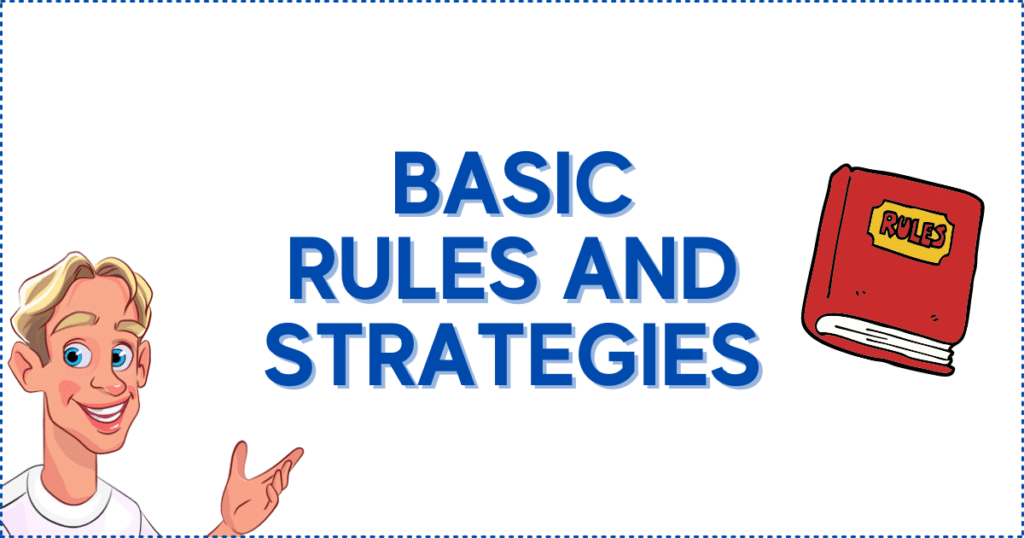Poker Hands: 1 Minute Guide
Poker has long been a popular pastime in Canada, attracting players of all skill levels to try this strategic card game. With its unique blend of luck, mathematics, and psychology, poker can be an engaging and rewarding experience for casual players and seasoned pros.
One of the key factors that contribute to the depth and appeal of poker is the wide variety of poker hands, which ultimately determine the winner of each round.
Understanding poker hands and their rankings is essential for any aspiring poker player. In the exciting world of Canadian poker, players must familiarize themselves with the different combinations of cards that can lead to victory.
Knowing the value and importance of each hand not only allows for strategic play but also serves as a foundation for mastering more advanced concepts.
By developing a solid grasp of poker hands, players in Canada can improve their decision-making at the table and increase their chances of success.
Whether participating in an online poker tournament or enjoying a friendly game among friends, understanding these crucial aspects of the game will undoubtedly enhance one's overall poker experience.

Poker Hands Ranking
Poker is a popular card game that requires players to possess strategic and analytical skills. This section will discuss poker hands' ranking and importance in the game. These rankings play a critical role in determining the winner of each round, so it's crucial to familiarize yourself with them.
The highest value poker hand is the Royal Flush or Ace-High Straight Flush, which consists of the Ace, King, Queen, Jack, and 10 of the same suit. This hand is unbeatable, making it the most sought-after combination in poker.
The second-highest poker hands are the Straight Flush. A straight flush consists of five consecutive cards of the same suit, such as 6-7-8-9-10 of hearts. It's important to note that a straight flush can't be wrapped around, meaning a combination of Q-K-A-2-3 is not a straight flush. A straight flush beats all poker hands except the Royal Flush.
Next are the Four of a Kind or quads poker hands, which comprise four cards of the same rank, such as four Aces or four 7s. To break ties in this category, the player with the highest-ranked set of four cards wins.
The fourth-ranking poker hand, the Full House, consists of three of a kind and a pair. For instance, having three Aces and two 6s would make a full house. When comparing full houses, the three-of-a-kind set's rank is considered first, followed by the pair's rank.
Flush is ranked fifth among all poker hands and consists of five non-consecutive cards of the same suit. The player with the highest-ranked card in their flush wins in case of ties.
The sixth-ranked hand is a Straight, consisting of five consecutive cards from different suits. The highest card in the straight is considered for tiebreakers.
The Three of a Kind hand follows the straight, made up of three cards of the same rank, like three Queens. Usually, the highest-ranked three-of-a-kind wins in case of ties.
The eighth-ranking hand is called Two Pair. This hand has two different pairs, such as two 5s and two Jacks. Tiebreakers in this category are determined by comparing the highest pairs first, followed by the lower pairs and finally, the kicker (the fifth card).
One Pair hand is a hand with only a single pair, ranking ninth in poker hands. Tiebreakers involve comparing the pairs, with the highest pair winning. The remaining cards are compared in descending order if the pairs are equal.
Finally, the lowest-ranked hand is the High Card. In cases where no player has a pair or better, the player holding the highest card wins. Ties are settled by comparing cards sequentially, from the highest to the lowest.
Understanding these poker hand rankings will significantly improve your gameplay, allowing you to make more informed decisions and increase your chances of winning the pot.
Be sure to study the rankings and practice identifying different hands during play to enhance your poker skills and become a formidable opponent at the table.

The Best Canadian Casinos to Reach the Strongest Poker Hands
| Online Casino | Welcome Bonus |
|---|---|
| Jackpot City Casino | 100% up to C$1600 |
| Spin Casino | 100% up to C$1000 and 50 bonus spins |
| PokerStars Casino | 100% up to C$2000 and 300 free spins |
| PlayOJO Casino | 50 no wagering bonus spins |
| 888 Casino | 100% up to C$200 and C$88 free on registration |
| Betsafe Casino | 100% up to C$1000 and 50 free spins |
| Royal Vegas Casino | 100% up to C$1200 and 100 free spins |
| Hell Spin Casino | Up to CA$1200 and 150 bonus spins |
| Kahuna Casino | Welcome bonus up to C$4000 and 200 free spins |
| Izzi Casino | 300% up to C$1,500 and 500 free spins |
Basic Rules and Strategies To Land The Best Poker Hands
Poker is a popular online casino game with various variants, such as Texas Hold'em and Omaha. Understanding poker rules and strategies will help improve your game and increase your chances of winning with strong poker hands. This section will briefly overview poker basics, hand rankings, and strategies.
Poker Basics
Poker games typically consist of two to 10 players and use a standard 52-card deck. The objective is to have the best possible poker hands or convince other players that you do, thus making them fold.
The gameplay involves a series of betting rounds, with players making decisions based on their hand, the community cards, and how their opponents act. Some common poker actions are:
- Raise: Increase the current bet.
- Call: Match the current bet.
- Fold: Surrender your hand and quit the current round.
Starting Hands
The importance of starting hands cannot be overstated. Whether you are playing Texas Hold'em Poker or Omaha, selecting and playing the right starting poker hands is crucial for success. Some strong starting hands include:
- Pocket Pair: Two cards of the same rank (e.g., two Aces).
- Suited Connectors: Two consecutive cards of the same suit (e.g., 10♠ and J♠).
- High Card Hand: A hand with a high-ranking card, such as Ace or King.
Various charts and cheat sheets are available that can guide you on which hands to play or fold, depending on your position. The position plays a crucial role as you can leverage late position to gather information about your opponents' actions before making your decision.
Pot Odds and Probability
One important aspect of poker strategy is understanding pot odds and probabilities, especially in Texas Hold'em. By assessing the likelihood of certain card combinations coming up and comparing this to the potential payout, you can decide whether to continue betting or fold your hand.
For example, if the pot is C$100 and it costs you C$20 to call, you need a 20% chance of having the best possible hand and winning to make it worthwhile.
Flop, Turn, and River
In community card games like Texas Hold'em and Omaha, the Flop refers to the first three community cards, the Turn is the fourth, and the River is the final community card. Adjusting your poker hands strategy based on these cards and your opponents' reactions is crucial to success.
For instance, if you have a strong hand on the flop, you might bet aggressively to force your opponents to fold. However, if the turn or river cards substantially improve your opponents' potential hands, you should play more cautiously or fold.
Learning from Experience
While luck plays a role in poker, as a beginner, focusing on improving your skills and understanding the casino game is essential. With practice, you'll get a sense of when to raise, call, or fold and make calculated decisions based on your poker hands, your opponents' actions, and the community cards.
As you gain experience, you'll learn to adapt and react to various poker situations, ultimately becoming a more confident, knowledgeable, and successful player.

Poker Hands Probabilities and Odds
Poker hand probabilities and odds are crucial in understanding the game and developing a successful strategy. In this section, we will discuss the probabilities and odds of various poker hands, helping players to make informed decisions during gameplay.
Each poker hand consists of 5 cards drawn from a standard deck of 52. There are 2,598,960 possible combinations of these 5 cards. Each hand's probability can be calculated by dividing the number of ways to draw that hand (frequency) by the total number of 5-card hands (sample space).
| 🃏 Royal Flush | The rarest hand in poker, a Royal Flush consists of the Ace, King, Queen, Jack, and Ten of the same suit. There are only 4 possible ways to draw a Royal Flush (one for each suit), making the probability 4 in 2,598,960, or roughly 0.000154%. The odds of getting a Royal Flush are 1 in 649,740. |
| 🃏 Straight Flush | A Straight Flush contains 5 consecutive cards of the same suit (excluding a Royal Flush). There are 36 possible ways to draw a Straight Flush for your poker hands, resulting in a probability of roughly 0.00139%. The odds of obtaining a Straight Flush are 1 in 72,193. |
| 🃏 Four of a Kind | This hand contains four cards of the same rank and one of a different rank. With 624 possible combinations, the probability of a Four of a Kind is approximately 0.024%. The odds for this hand are 1 in 4,165. |
| 🃏 Full House | A Full House consists of three cards of one rank and two cards of another rank. There are 3,744 ways to draw a Full House, giving it a probability of about 0.144%. The odds of obtaining a Full House are 1 in 694. |
| 🃏 Flush | A Flush includes five non-consecutive cards of the same suit. With 5,108 possible combinations, the probability of a Flush as your poker hands is around 0.197%. The odds for a Flush are 1 in 508. |
| 🃏 Straight | A Straight contains five consecutive cards of varying suits. There are 10,200 possible ways to draw a Straight, resulting in a probability of approximately 0.392%. The odds of obtaining a Straight are 1 in 254. |
| 🃏 Three of a Kind | This hand has three cards of the same rank and two other cards of different ranks. With 54,912 possible combinations, the probability of a Three of a Kind is about 2.11%. The odds for this hand are 1 in 47. |
| 🃏 Two Pair | A Two Pair consists of two cards of one rank, two cards of another rank, and one card of a third rank. There are 123,552 possible ways to draw a Two Pair, giving it a probability of roughly 4.75%. The odds of obtaining a Two Pair are 1 in 21. |
| 🃏 One Pair | One Pair contains two cards of the same rank and three other cards of different ranks. With 1,098,240 possible combinations, the probability of One Pair is approximately 42.3%. The odds for One Pair are 1 in 2.36. |
| 🃏 High Card | High Card poker hands have no matching ranks or consecutive cards. There are 1,302,540 possible ways to draw a High Card, resulting in a probability of about 50.1%. The odds of obtaining a High Card are roughly 1 to 1. |
These probabilities and odds serve as a foundation for making decisions and developing strategies in poker. Remember them during gameplay for a more informed and successful approach to the game.
Different Poker Variants and Their Poker Hands
Poker is a diverse and exciting game with numerous variants that cater to players' preferences and skill levels. This section will discuss some of the most popular poker variants, their unique gameplay, and how they fit into different categories.
These include Texas Hold'em, Omaha, Seven-Card Stud, and Razz.
Texas Hold'em is arguably the most popular and well-known poker variant. Played with two hole cards, players combine their cards with five community cards to form the best five-card poker hands. Due to its popularity, Texas Hold'em is often the main game offered in all major poker tournaments.
Omaha is another popular poker variant known for its bigger pots and action-packed gameplay. Similar to Texas Hold'em, Omaha requires players to use a combination of hole and community cards, but with a key difference: each player receives four hole cards instead of two.
Players must use exactly two of their hole cards and three of the community cards to form winning poker hands. This increases the number of possible hands, making Omaha more complex than Texas Hold'em.
Seven-Card Stud was the most popular poker variant before the rise of Texas Hold'em. It's a classic iteration of poker, where each player receives seven cards and must make the best five-card poker hands out of them.
Unlike Texas Hold'em and Omaha, Seven-Card Stud has no community cards. Players must rely on the cards they are dealt, making hand reading and strategic play more critical than in the other variants.
Razz is a lowball poker variant belonging to the Stud family of games. Unlike the other variants mentioned, the goal in Razz is to make the smallest five-card poker hands possible from the seven cards received.
Straights and flushes don't count against the players, and Aces are considered the lowest card. This unique aspect of Razz challenges players to adjust their mindset from chasing high-ranking hands to aiming for the lowest possible combinations.
In summary, the world of poker offers various intriguing options for players to choose from. Texas Hold'em, Omaha, Seven-Card Stud, and Razz each bring their distinctive take on the classic game with different goals, strategies, and hand rankings.
Players looking for a diverse poker experience have a wealth of options at their disposal, catering to every preference and skill level.

Starting Hands Evaluation
When playing poker, the strength of your starting poker hands is crucial to your success. This evaluation of starting hands will help you better understand how to select the best cards and improve your overall game.
A starting hands chart or cheat sheet can be a helpful tool for new players. It provides a quick reference to the strongest poker hands and their corresponding ranges, such as pocket pairs, suited connectors, and offsuit high card hands.
Position at the table also plays a significant role in poker hand strength. The early, middle, and late positions all require different considerations when it comes to starting hands.
You should be more conservative with your starting hands in the early position. Stick to strong pocket pairs, like pocket aces or kings, and high-suited connectors. This is because players in later positions can put pressure on you with their bets, and you'll need a solid hand to withstand that pressure.
As you move to the middle position, you can slightly widen your range of starting hands. Hands such as pocket queens, jacks, or tens are now more playable. Additionally, suited hands like AKs or AQs are strong choices due to their potential to make flushes and high pairs.
In late position, you have the advantage of observing players' actions before you and can typically afford to play even more starting hands. This includes lower pocket pairs (e.g., 2-2, 3-3) and suited connectors like QJs or JTs.
Keep in mind that these starting hand ranges are guidelines and not strict rules. As you gain more experience, you will naturally adjust your ranges and playstyle based on your opponents and the game dynamics at your table.
Remember to constantly evaluate your starting hands in the context of table position, opponents' tendencies, and your skill level. This will help you make informed decisions and improve your poker performance.

Position and Betting
In poker, your position at the table significantly impacts your decision-making process, especially when it comes to betting. There are three main positions in a card game: early position (EP), middle position (MP), and late position (LP).
It's crucial to understand each position and adopt an appropriate betting strategy for success and to reach winning poker hands.
Early Position (EP)
In the early position, you're one of the first players in the poker room to act. This puts you at a disadvantage since you have limited information on how your opponents might play their poker hands.
It is advisable to raise with only premium hands, such as pocket pairs and high-ranking suited connectors, to maintain a strong and tight range.
Folding weaker hands in this position is recommended, as more players are left to act, and you risk facing re-raises or multiple players calling your bet.
Middle Position (MP)
You have more information on the earlier players' actions as a player in the middle position. However, there are still players left to act behind you. This position allows you to broaden your betting range slightly, including some suited connectors and medium-strength pocket pairs.
However, caution is still necessary, as players in late positions could exploit your looser betting strategy.
Late Position (LP)
The late position provides the most information, as you are the last or the second-to-last player to act in a betting round. This advantageous position allows you to observe opponents' actions and make more informed decisions about your play.
You can afford to widen your range significantly, playing speculative poker hands and applying pressure on the other players through aggressive bets and raises.
- Early Position: Raise with premium hands, fold weak poker hands
- Middle Position: Widen range slightly with suited connectors and medium-strength pocket pairs
- Late Position: Further widen the range, play speculative hands, and apply pressure
Remember to consider your opponents' ranges and betting tendencies along with your position when making decisions in a poker game. By understanding how position affects betting, you can maximize your opportunities for success in the long run.

Tie-Breaking Scenarios
Tied poker hands may sometimes occur, and understanding how to resolve them is essential. This section will discuss common tie-breaking scenarios, focusing on the ‘kicker' card, which often plays a crucial role in determining the winner.
When two players have identical hands (such as a pair, two pairs, three of a kind, or four of a kind), the kicker comes into play. A kicker is the highest card in a player's hand not used in determining the rank of the hand. Here are some examples:
- Pairs: When two players have a pair, the highest pair wins. If the pairs are equal, the highest kicker determines the winner. For instance, 5-5-J-7-4 beats 5-5-9-8-7 because the Jack is higher than the 9.
- Two Pairs: If two players have two pairs, the player with the highest pair wins. If the highest pairs match, the second pair will be compared, and if those are also equal, the highest kicker will break the tie. For example, Aces over Queens beats Queens over Jacks or Aces over Jacks.
- Three of a Kind: When players have three of a kind, the highest set of three wins. The highest of the two remaining kickers will determine the winner if both sets are equal. If those kickers also match, the final kicker will break the tie.
Sometimes, the poker hands are so close to identical that the pot will be split. This situation is most common when both players have a straight, flush, or full house. Here are some examples:
- Straight: If two players have a straight, the one ending with the highest card wins. However, the pot is split if both straights have the same high card. For example, 6-7-8-9-10 and 8-9-10-J-Q would be split if the board contains 7-8-9-10-J.
- Flush: If two players have a flush, the highest card in the flush will determine the winner. If the highest cards are equal, then the second, third, fourth, and eventually the fifth-highest cards will be compared until a winner is found or the pot is split.
- Full House: When two players have a full house, the highest three of a kind will determine the winner. If both players have the same three-of-a-kind, the higher pair will break the tie.
In summary, when faced with tied hands in poker, consider the rank of the hand, the pairs involved, and the kicker cards to determine the winner. Understanding these scenarios will help you make informed decisions and improve your chances of winning in poker.

Frequently Asked Questions
What are the most common poker hands in a game?
The most common poker hands in a game include a high card, one pair, two pairs, three of a kind, straight, flush, full house, four of a kind, straight flush, and royal flush. The probability of getting these hands varies, with high card being the most common and royal flush being the rarest.
How do the positions affect the poker hands you should play?
The position is crucial in poker as it influences the type and range of hands you should play. Early positions should play tighter and prioritize premium hands. In contrast, late positions allow for more flexible hand selections, as they can observe other players' actions before making decisions.
What poker hand rankings chart is used for poker hands in Canada?
Canadian poker follows the same international standard ranking system for poker hands. From the highest to the lowest, the ranking is as follows: Royal Flush, Straight Flush, Four of a Kind, Full House, Flush, Straight, Three of a Kind, Two Pair, One Pair, and High Card.
Which poker hands are considered the strongest in 5-card games?
In 5-card games, the strongest hands include Royal Flush, Straight Flush, and Four of a Kind. A Royal Flush is a hand that consists of a Ten, Jack, Queen, King, and Ace of the same suit, and it's the rarest and most valuable hand possible in poker.
How can you improve your chances of winning based on poker hand knowledge?
Improving your chances of winning starts with understanding poker hand rankings and probabilities. Study the odds of getting each hand and use this knowledge to assess the strength of your hand compared to opponents. This will help you decide when to bet, call, raise, or fold.
Are there specific strategies for playing different poker hands in Canada?
While Canadian poker follows the same rules and strategies as elsewhere, you should adapt your playstyle according to your hand strength, position, and opponents. For example, play aggressively and with no limits with premium hands, especially in late positions, and be cautious with weaker hands or early positions. Additionally, observe your opponents, identify their playing styles, and adjust your strategies accordingly, exploiting any weaknesses they reveal.
Sources:

Lars Wahlström is a renowned expert in the online casino industry, boasting over two decades of multifaceted experience spanning technological development and operational management. As the visionary CEO and Publisher of ARGO Gaming Group, the force behind the successful Casinoclaw brand, Lars combines his lifelong enthusiasm for gaming and gambling with an impressive track record in slots, casino gaming, poker, sports betting, and trotting.
Esteemed for his insightful contributions, Lars is highly regarded as a top-tier authority in casino journalism. He is a staple at international industry conferences, providing valuable insights on panels and networking opportunities.
Based out of the ARGO HQ and Stockholm office, Lars is a globetrotter, ensuring he remains at the forefront of industry trends. Connect with Lars for his expert perspectives through our contact page, or network with him on LinkedIn and X for the latest in iGaming innovation.

